I have been on many OSMP (Open Space and Mountain Parks, run by the city of Boulder) hikes before... but never one on agricultural land. Actually, I hadn't even known they had agricultural land!
The preservation of open space around Boulder began in 1898. Today, it encompasses over 45,000 acres in and around the city. The various parcels of land serve many different functions: wildlife habitat, unique geologic features, riparian greenways, cultural heritage, recreational areas and agricultural production. Most of the almost 15,000 acres of agricultural land is leased to local ranchers for cattle grazing. The rest is used for hay, organic vegetable and apparently also... honey.

Today, on this rather warm Saturday morning in early August, we were meeting at OSMP's Paclamar property located in East Boulder. Lauren, our ranger and guide, met us at the parking lot and gave us some background history.
Dick and Marge Brooks moved here from Ohio in 1955 seeking the dry climate after their two children developed asthma. Dick formed a partnership with two other guys and they named the farm after their wives' first names: Patricia, Clara, and Marjorie... or Paclamar. For many years they were a prize dairy cow farm until they sold the land to OSMP sometime in the 1970's. Now the area is primarily used for growing crops.
We lingered a bit longer since Lauren explained they were still "smoking" the bees to calm then down, then we walked a fair distance out to the far end of the field.

These tiny white dots are the bee boxes, our destination. Wheat had been grown in these front fields; oats in the back ones.
As we approached the boxes, we were met by Jim (OSMP’s resident beekeeper) and Brianna (his 10-year-old daughter). Jim told us the story of how he had gotten into beekeeping. When Brianna was around 6 years old, she had wanted to learn about bees. He figured the best way to learn was by doing. So he bought a couple 'starter kits'. He now leases the land from OSMP on a yearly basis, and every year they expand just a little bit, learning more and more about these amazing little creatures.... and difficult hobby!
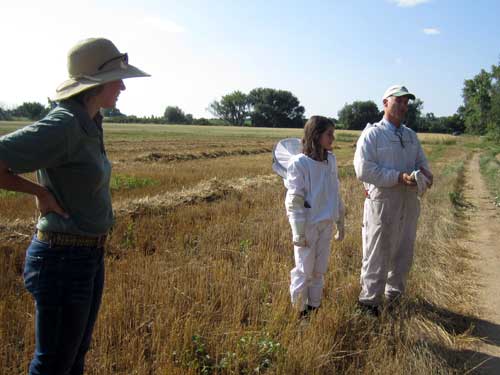
Lauren, Brianna and Jim
We continued to the actual bee boxes. Jim estimates he has around 80 - 100 boxes on several different pieces of OSMP land. He doesn't make a profit from this and mostly just tries to break even. While some apiarists (beekeepers) use bees for their numerous products (honey, wax, pollen, royal jelly, etc), to pollinate crops or to produce bees for sale to other beekeepers, Jim mainly focuses on liquid honey and making queens to expand his colonies. He is also experimenting with comb honey this year.
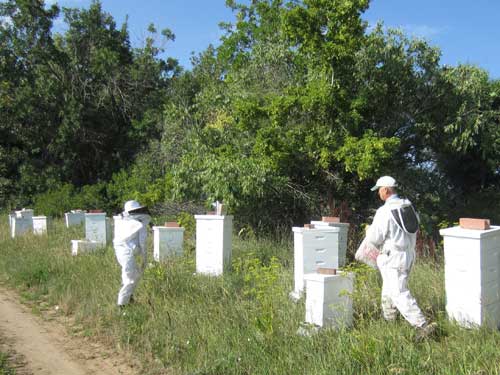
The bee boxes
Humans have collected honey from wild bees for over 15,000 years. Efforts to domesticate them started some 4,500 years ago. Unfortunately these early methods involved the destruction of the entire colony when the honey was harvested... the eggs, the larvae, even the precious queen. It wasn't until the 1700's that Europeans began understanding bees and focused on the construction of the moveable comb hive (so honey could be harvested while leaving the colony intact).

Almost all the bees in a hive are female workers. At the height of summer when there are broods to be raised and nectar to be harvested, her lifespan may be as short as 6 weeks; in late autumn, a worker bee may live for 16 weeks, through the winter.
Drones are almost twice the size of a worker bee. There are not many of them and their one and only function is to mate with new queens. When the season is over, they are driven from the hive, left to die.
The queen is the only breeding female in the colony and can live up to 3 years. She can lay half a million eggs or more in her lifetime (1,500 - 2,000 eggs per day). The queen is raised from a normal worker egg but is fed a larger amount of royal jelly (a secretion from the glands in the heads of worker bees) which results in a radically different growth and metamorphosis. The first one that hatches immediately kills any other queens still in development. There can be only one, after all.

The smaller box is called a nuc. It is a part of a hive of bees, usually with the intention of starting a new queen. A new queen can be encouraged to be produced by splitting a colony into such nucs (taking advantage of the instinct of queenless bees to raise queens), be made by grafting (putting larvae into artificial cell cups) or can be bought (starting at a hefty $30 each).

A quick look inside
Bees have a hard time surviving the winters here. They need a certain mass (colony size) to stay warm enough and also need enough food (honey) to make it through the lean months.

Lauren gives us more info while Jim applies some more smoke.
OSMP doesn't use any pesticides on their crops, unlike some farms in neighboring Weld County which still aerial spray their crops. For local farmers that do use pesticides, they are being encouraged to to switch to more organic chemicals, which still aren't always that good for bees but at least it's a step in the right direction.

The "smoker" was filled with local hay and then lit.
Knowledge is a bee keeper's first line of defense. Protective clothing is the second (especially for novice beekeepers). Smoke is the third. Smoke calms bees - it initiates a feeding response in anticipation of possible hive abandonment due to fire and also masks alarm pheromones released by guard bees.
We then walked a bit further down the path to Jim's truck where he had several more things to show us.

Giving the area another spray of smoke

The bees were indeed quite passive.

There were two kinds of boxes... the regular ones (in the back) and the comb ones (in the front)

Jim shows us a frame from a regular box. Brianna stands in the background, with full bee garb on.


An unhappy bee tries to reclaim some of her honey.

Busy as the proverbial bee!

Some of their liquid honey. Unfortunately they don't really make enough to sell so you won't find it on the supermarket shelf; it mostly all goes to friends and family.

Checking the sediment. Eventually all unproccessed honey will turn cloudy (from crystallization). The only way it can stay permanently clear and liquidy is if it is heated.... which potentially changes the taste and color.

Lauren passes around some almond honey-butter cookes she made.

What a great treat!!

A woman gently and carefully helps a bee down that had landed on her nose... unlike running around screaming with arms flailing (which is probably what I would have done).

This is a frame from the comb box.

Apparently the bees don't like using these as much.

The result

We then got to have a taste!!

It was quite delicious! The tiny bits of wax could be spit out. They are not at all harmful to eat, just a bit, well, waxy. They supposedly work well melted on hot toast but aren't quite so good in hot tea.

Once we had taken our share, Jim returned the rest to the bees.

Brianna then handed out free samples...

... much to my incredible delight!! Note the cloudiness.
We then slowly dissipated, making our individual ways back to our vehicles. It was such a lovely, scenic area.

The path back
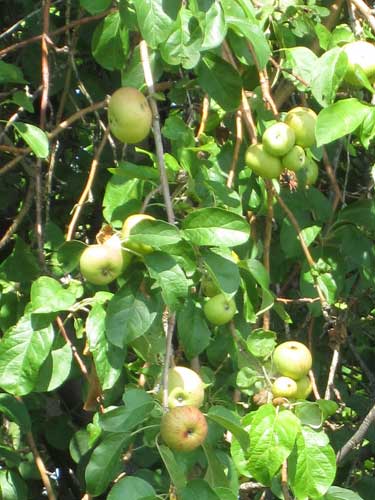
There were many fruit trees (such as this apple tree) in the area. Good for both the trees and the bees!
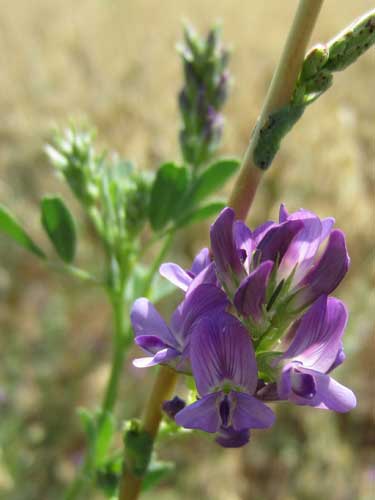
Bees love alfalfa (as do cattle and other hay-eating animals).
Interestingly enough, a farmer can't grow alfalfa every year because the flowers put out a toxin that prevents their own seeds from germinating. This means a farmer can only grow it every other year. So wheat and oats were used this year. Not to mention, the area was getting hit rather hard by the alfalfa weevil.

A beautiful view of a neighboring farm. It was a bit hazy otherwise the Rocky Mountains could be more easily seen in the background.

A vulture soars high above.

Bales of hay and a scary-looking piece of farm equipment (hey, I'm a city girl).

Another classic-looking farm
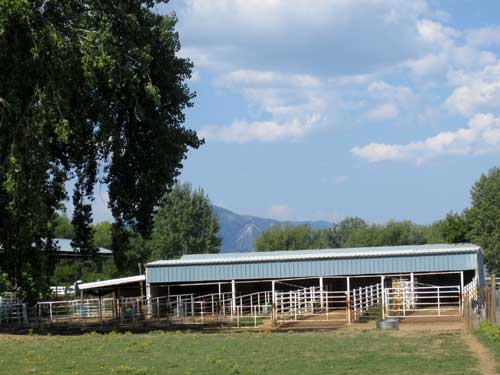
Some horse stalls... complete with sounds and smells!

